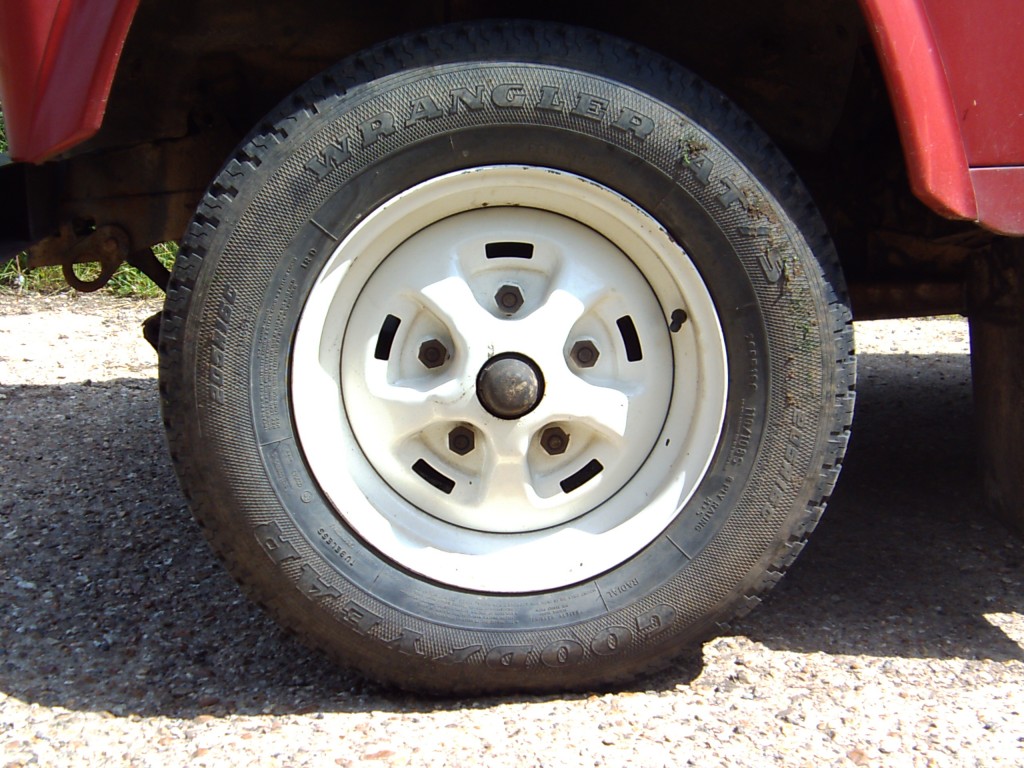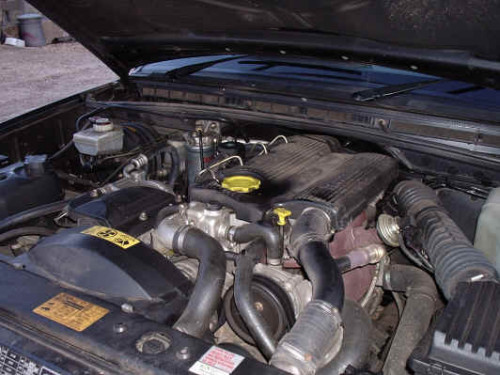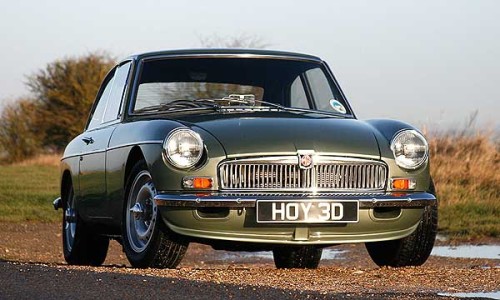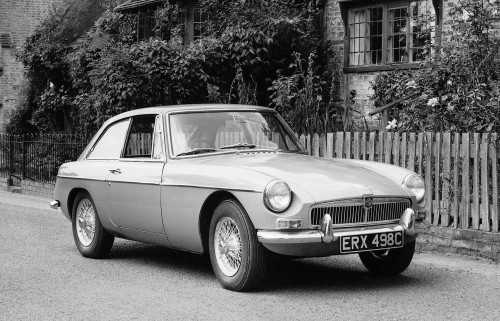Tonight’s blog subject may come a little out of the deep off-side, but I’m going to talk about the subject of modifications to classic cars.
From the start, I’m going to say that I, personally, don’t go in for modification to my cars. I used to- my first Series III Land Rover quickly sprouted some almost entirely unnecessary ironmongery on various parts simply because I thought it looked good. It had some ‘hilariously witty’ stickers on the back, for the benefit of all the motorists I must have held up over the three years I had the wagon. I kidded myself that I needed a capstan winch on the front and a snorkel because I very occasionally went off-roading and had to negotiate obstacles slightly more taxing than a flat, muddy field. Which I managed to get stuck in, anyway.

Like so…
In retrospect that was a sort of epiphany. In completely standard trim a Series Land Rover is one of the most capable off-roaders ever made and certainly well up to anything I could have thrown it at.
Since then I have operated a strict ‘no mods’ policy on my cars. This isn’t a complete exercise in denial- I fitted a CD player to the Citroën so I wouldn’t go crazy on long journeys and I’m very glad that the previous owner fitted rear seatbelts to it (I’m not so keen on the “2CV’ers Do It Bouncily” sticker on the boot lid, but it won’t come off without leaving a mark on the paintwork, so it stays).
My current Land Rover is resolutely stock. The Land Rover scene is one that thrives on modification, customising and personalisation and so finding a 20+ year old one in the same condition it left the factory was one of the things that attracted me to it in the first place. In fact the only ‘modification’ it had had was a set of larger-diameter tyres, which I quickly junked in favour of some smaller ones of the correct size.
I feel I may be unique in choosing to fit smaller, less aggressive tyres to a Land Rover, but it illustrates my point very well. The larger tyres stunted the Landy’s performance (of which there isn’t much to spare in the first place) and threw the speedo reading out of whack. With the correct tyres on (the ones that Land Rover – the people who designed the car- reckoned suited it best) it not only accelerates faster and actually stay in top gear on hills but it actually cruises better too because while it revs slightly higher it isn’t working as hard. The only downsides to going back to the correct size is that I have about two inches less ground clearance and you can get your entire head into the gap between the tyre and the wheel arch.
“Small wheels keep on turnin’…!”
There’s an obvious counterpoint here- I changed the car from the condition it was when I got it to suit my requirements better. If I regularly had to tackle a deeply-rutted farm track I’d be wanting those bigger tyres, and I’d be stupid to suffer continual grounding-out and scraping all the paint off the bottom of the axles in the name of ‘originality’. Of course I would.
Land Rovers are a slightly off case study because they’re built to be modified and you probably see a couple every day that have been specced up to do some specific job that little bit better. That’s fine with me- it’s the nature of the beast.
It’s when you start changing that nature entirely that I start to lose enthusiasm. Sticking with Land Rovers for a bit longer, a current bug-bear of mine is what I call the ‘Stick A Tdi In It, Mate’ Problem.
For those unfamiliar with the Land Rover scene, for the past five years or so the ‘done thing’ if you have a Series Land Rover with an original 2.25-litre engine (none of which are ‘troubled with a surplus of power’, to use a wonderful old Autocar phrase) is to hoik out the old cast-iron lump and drop in a Tdi unit , usually sourced from a rusted-out Discovery. Being a development of the 2.25 engine the Tdi drops in with minimal alteration work needed, mates straight up to the original gearbox and provides nearly double the power and half the fuel consumption of either of the original engines. This has become virtually the default setting for Series Landy owners, and it’s amazing how long you have to walk around a Land Rover show these days before finding a Series II with its ‘proper’ engine in it.
 A Tdi in its naturally habitat. Where it should belong.
A Tdi in its naturally habitat. Where it should belong.
The Tdi conversion is, of course, a ‘win-win’ situation for the owner (more power, less fuel) and it makes perfect, logical sense to anyone, except those who write about cars on the internet on Friday evenings. It just seems to be changing the nature of the vehicle and thus, in some essential way, destroying it.
Having used such a strong term, this is probably the time to point out that I’m not taking a strong moral stance on it. Life is too short to get uppity about what people do to the various collections of ferrous metal and rubber that they use to go to work in, and what they want to do to their own property is entirely up to them. It’s just not something I’ve ever managed to get onboard with.
When I upgraded from a Series III Land Rover to a Ninety Station Wagon, I could have (for much less cost than buying another Land Rover and tarting it up) got the same performance from my Series III by fitting a Tdi engine, the same ride by fitting parabolic springs, the same refinement by fitting a soundproofing kit, the same ease of driving by fitting a power steering kit and so on. But then I wouldn’t have been driving a Series III Land Rover any more. The entire experience of those vehicles, the very things that make them such charismatic, involving vehicles to driver are, in my opinion, removed to the extent when you do these sorts of mods that you might as well cut to the chase and buy a Land Rover that comes with all of those things in stock form.
I think it is, fundamentally, because I enjoy cars, both the good and the bad points, especially when we’re dealing with classic cars that are nearly all woefully inadequate in every way when compared to the modern stuff. I like my Austin Metro because it’s, well, a Metro. It handles the way a Metro does, it has as much power as a Metro 1.3L does, it makes the noises a Metro does, it rides like a Metro does. The radio sounds like the one in a Metro and the seats are as comfortable or as uncomfortable as the seats in a Metro because the car is a Metro.
This is not a Metro. It just looks like one.
I could make it go faster (although I don’t particularly feel the need to) by fitting a pair of down-draught carbs, a ported cylinder head, a more aggressive camshaft etc, or make it handle better by replacing the balls of gas and water with proper springs but then it wouldn’t be Metro. I wouldn’t be experiencing the Metro as it was designed, built and offered to people in 1987, which is what interests me. Many people will say that my hypothetical modded Metro would be a much better car, and I would agree (I would also tell them that you might as well get an MGF, which is the same thing but turned through 180 degrees) but that’s missing the point.
I don’t value originality in and of itself. I am not a rivet counter and I don’t care whether or not every little detail is the way the car was when it left the factory. I’m not daft enough to insist that old cars should all be rumbling around on cross-ply tyres with no seat belts, because they don’t fundamentally alter the nature of the car and the experience of driving it.
Of course, that opens the secondary question of where I would draw the line- if radial tyres and halogen bulbs are OK, what about a brake servo, or a disc brake conversion on safety grounds? What about fitting a fully-synchromesh gearbox from a Series III Land Rover to a Series II? It makes it easier to drive and you can’t tell the difference until you try to shift into bottom gear on the move.
I can’t give you a reply because it changes for every car- for me it’s on a ‘case by case’ basis.
What brought on all this pondering was a discussion this week about the Frontline LE50, which takes the idea of modification into the realms of modernisation.
 If you’re the one person left in the world who hasn’t heard of the LE50, it’s a limited-run bespoke car based around a brand new MGB GT bodyshell, built by a company in Abingdon (the spiritual home of MG) to commemorate the MGB’s 50th anniversary last year.
If you’re the one person left in the world who hasn’t heard of the LE50, it’s a limited-run bespoke car based around a brand new MGB GT bodyshell, built by a company in Abingdon (the spiritual home of MG) to commemorate the MGB’s 50th anniversary last year.
The LE50 looks fantastic- the press car is turned out in a pale metallic shade of British Racing Green, it has steel perforated wheels with chrome knock-off caps (I’ve never liked B GTs on wire wheels) and it has a neat chin spoiler. It also rides slightly lower and slightly wider than a stock MGB.
This is because, under the skin, it isn’t really an MGB (so I would say). It’s powered by a 2-litre Mazda engine and it has a Mazda gearbox. It has adjustable coil-over suspension on each corner (although it does at least retain the MGB’s live rear axle). It can, apparently, top over 150mph and do dazzling 0-60 times. In other words it’s entirely unlike an MGB in every way.
There are plenty of jokes to be made here- of course a car that’s exquisitely finished, Swiss-watch-reliable, fast, refined and with handling that has had everyone who’s driven it rambling to the point of incoherence can’t possibly be a proper MG as it’s far too good. And I would agree, and that’s the point.
Being slightly less flippant, the MGB experience isn’t scaleable. Just because the LE50 is twice as fast as an MGB, or more than twice as powerful and so on doesn’t make it ‘an MGB but twice as good’. Classic MGs are about fun and character on relatively little power and relatively little performance. They’re engaging to drive, even at 40mph or so, precisely because the back axle is hung from leaf springs and the B-Series paperweight in the nose needs to be spanked to keep making decent progress. It’s not about performance by the numbers or engineering sophistication, which is exactly what the LE50 is about. It’s not even offering an MGB with none of the downsides- it’s offering a completely different experience with the only constant being the looks.
What it is an MGB for those who don’t want an MGB, like those people on Escape To The Country who want to ‘get away from it all’ in deepest darkest Worcestershire and then complain that it’s too far to the shops, that there aren’t any street lamps and the whole parish smells of cowpats.
I admire the LE50 and the huge amount of work that has gone into it. It’s great that we have yet another thriving small-scale sports car builder on the scene, offering an entirely unique product. Frontline can’t make LE50s fast enough (would that the ‘real’ MG company up in Birmingham had the same problem). In fact, that’s a good point- if Frontline hadn’t built the LE50 on an MGB shell, but a self-built coupe or roadster body with a few retro cues I’d almost certainly be hailing it as a modern spiritual incarnation of the classic MG sports car.
Which is not the same thing as it being a classic MG sports car. Which it isn’t.
